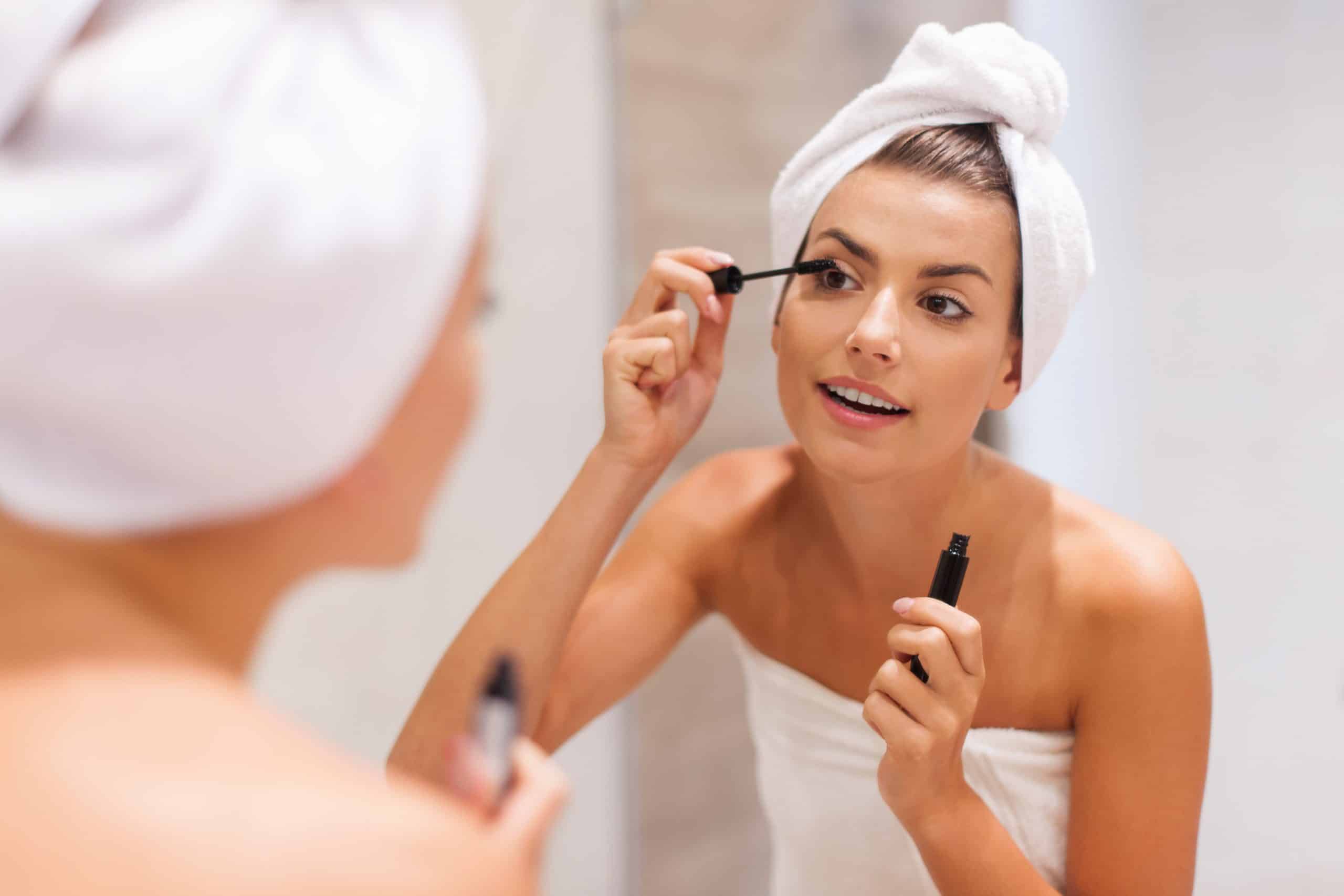Toxins In Cosmetics And Beauty Products Are Causing Disease
Body care and beauty products are widely used to maintain our appearance, but few people realize that some of these products contain toxins. Toxins in cosmetics and body care products are a topic of growing concern in modern society. Consumers are increasingly aware that many widely used products contain chemicals that can be dangerous to their health. In this article, we will discuss the various toxins in cosmetics and beauty products, their potentially harmful effects on human health, and how to avoid them. We will also provide some tips for choosing safer alternatives.
What Are The Toxins In Cosmetics And Body Care Products?
Common toxins in cosmetics and beauty products include parabens, phthalates, retinyl acetate, retinyl palmitate, acrylamide, fragrances, formaldehyde preservatives, triclosan, coumarin, oxybenzone, methylisothiazolinone, styrene, PFAS, lilial, artificial dyes, and even the extremely toxic heavy metal lead! These chemicals can be absorbed through the skin or inhaled when using certain products.
There are far more toxins in cosmetics than we will cover here. Overall, there are 518 unique chemicals used in cosmetics and body care products. While all of these chemicals aren’t toxic, most of them aren’t strictly tested for long-term safety.
Additionally, 88 chemicals that have been connected to birth defects, and reproductive problems are still being used at 595 cosmetic manufacturing companies. The message is clear, choose natural, safer options for both cosmetics and beauty products if you wish to steer clear of these toxins.1
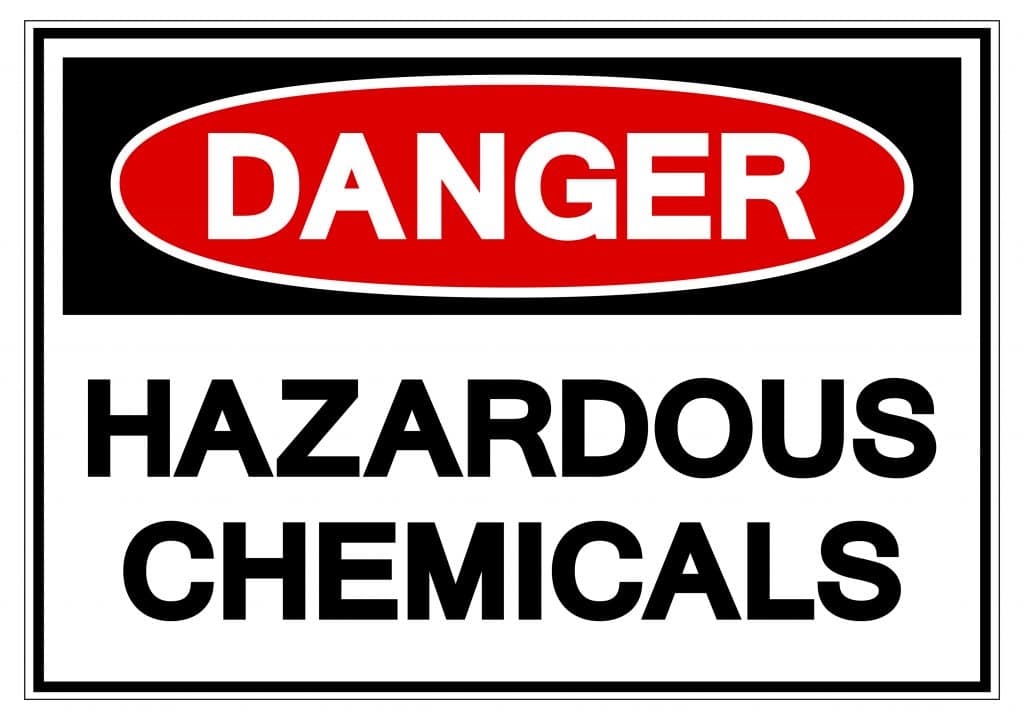
Parabens – One Of The Most Common Toxins In Cosmetics
Parabens are a type of preservative commonly found in cosmetics and personal care items such as shampoo, bronzer, brow liner, concealer, lip liner, mascara, foundation, and sunscreen. Typically, parabens will be listed as isobutylparaben, ethylparaben, methylparaben in the list of ingredients. While they may help prolong the shelf life of a product, they have also been linked to hormone disruption due to their ability to mimic hormones.2 3
Phthalates
Phthalates are another type of toxin commonly found in beauty and body care products. They are used to make plastics more pliable, but they can also be found in nail polishes, hair sprays, perfumes, lotions, creams, deodorants, and even baby products.4 Studies have shown that phthalates can disrupt the endocrine system, cause reproductive problems, and trigger allergies.5 6
Retinyl Acetate
Retinyl acetate is one of the many toxins in cosmetics. It is included in setting powder, brow liner, concealer, lip liner, and mascara. This chemical is an ester derivative of retinol, which is a form of vitamin A. Retinyl acetate is used in some cosmetics to boost the antioxidant power and to reduce wrinkles and age spots caused by sun exposure. It can also help to create a smoother skin texture.
However, retinyl acetate can be toxic if not used correctly, as it has been linked to increased risks of reproductive toxicity, and other health issues when applied directly to the skin at high concentrations.7

Retinyl Palmitate
Retinyl Palmitate is a type of toxin found in brow liners. This chemical, which is derived from Vitamin A, can cause skin irritation and has been linked to premature aging when applied topically or ingested. Retinyl palmitate has been shown to increase the speed of skin tumor growth when exposed to sunlight.8
Acrylamide
Acrylamide is a type of toxin found in some cosmetics like CC cream. It is used as an additive to increase the viscosity of liquid makeup, which can make it easier to apply. In addition, the chemical can cause reproductive issues and genetic mutations.9
Fragrances
Fragrances are a common ingredient in body care products like perfumes and lotions, but many contain harmful chemicals such as phthalates, specifically, the toxic dibutyl phthalate and diethylhexyl phthalate.10 11 12 13 Additionally, some fragrances contain synthetic ingredients which may cause allergic reactions or respiratory issues when inhaled over time.14

Formaldehyde – One Of The Most Common Toxins In Cosmetics
Formaldehyde preservatives are used to prolong the shelf life of a product, but it is carcinogenic. This chemical is often found in hair dyes, body washes, blush, mascara, lotion, shampoo, and other beauty products. Typically formaldehyde is named polyoxymethylene urea and quaternium-15 on the list of ingredients.15
Triclosan
Triclosan is another common ingredient found in body care products such as toothpaste, mouthwash, and hand sanitizer. This chemical was used in antibacterial soap and dishwashing detergent before it was banned by the FDA in 2016. Triclosan is a synthetic antibacterial agent that can help kill harmful bacteria. Unfortunately, Triclosan has been linked to the development of antibiotic-resistant bacteria and may also act as an endocrine disruptor due to its ability to mimic hormones such as testosterone and estrogen.17
Coumarin
Coumarin is a toxin commonly found in cosmetics, especially fragrances and perfumes. It is derived from the bitter scent of tonka beans, which are loaded with natural coumarin compounds. This chemical can cause skin irritation and has been linked to liver damage. Therefore, it is important to look for products labeled as “fragrance-free” or that explicitly list all of their ingredients so you can avoid exposing yourself to this toxin.18
Oxybenzone
Oxybenzone is a chemical found in many sunscreen products. Studies suggest that oxybenzone can act as an endocrine disruptor and may cause reproductive harm in humans when exposed to high concentrations over long periods of time. Additionally, it has been shown to damage coral reefs when washed off after swimming or showering.19
Methylisothiazolinone
Methylisothiazolinone is a preservative often found in cosmetics and personal care products, such as shampoo, conditioner, lipstick, lotion, makeup, and sunscreen. It acts as an antibacterial agent to keep the product from spoiling.
While this toxin helps protect against bacteria and fungi buildup over time, long-term exposure can cause irritation and allergic reactions in some people. Symptoms of skin irritation include redness, itching, burning sensations, dryness, and swelling. Those with more severe reactions may experience blistering or hives.20
Styrene
Styrene is a type of toxin found in cosmetics like nail polish. This chemical is known to cause contact dermatitis, which is an allergic reaction that appears as redness or swelling around the area where the product has been applied. Styrene can also accumulate in fat cells, leading to health risks such as liver toxicity and nervous system damage. In addition, styrene may disrupt hormone levels and reproductive functions.21
PFAS – Another One Of The Most Common Toxins In Cosmetics
Perfluoroalkyl and Polyfluoroalkyl substances (PFAS) are two other toxins in cosmetics like lipstick, lip gloss, lip liners, foundations, concealers, mascara, eyeliners, eye shadows, and creams. PFAS are a group of manmade chemicals that can be easily absorbed into the body through contact with the skin. PFAS have been linked to serious health problems, such as liver damage, impaired immune system function, and reproductive issues.
Therefore, it is important to know which ingredients may contain PFAS so that you can make informed decisions about the products you use. However, the industry doesn’t require companies to list PFAS on the ingredient list. The only reason we know PFAS are included in cosmetics like waterproof mascara, foundations, and liquid lipsticks is that many have tested for high levels of fluorine, indicating PFAS are present.22
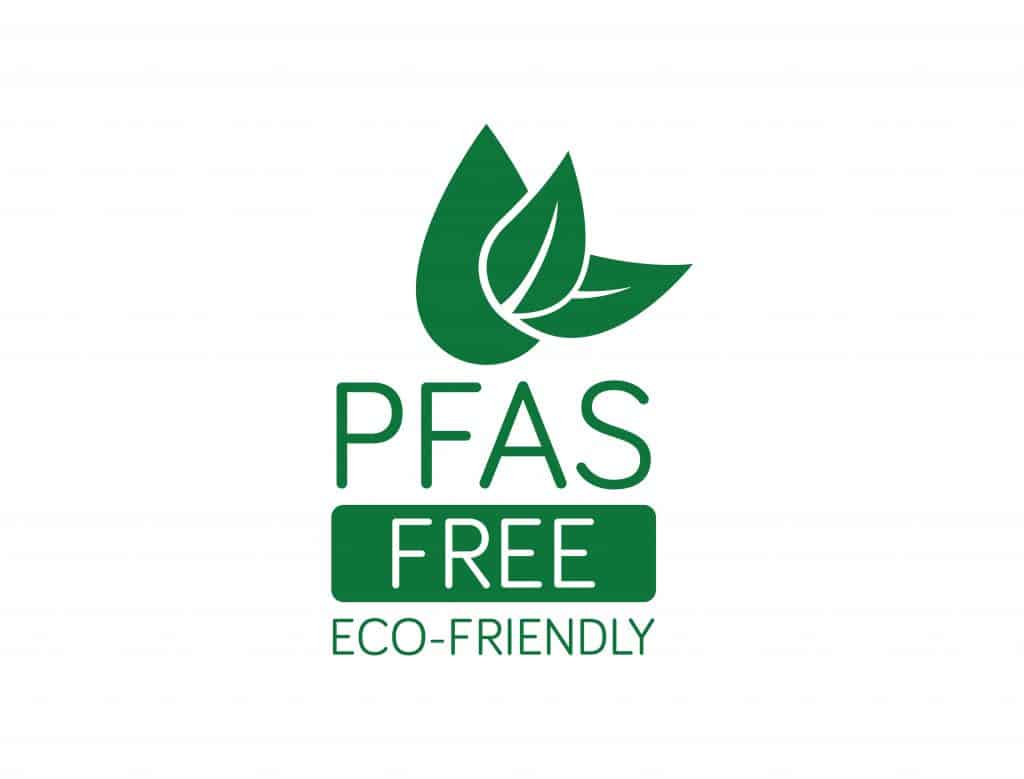
Lilial
Lilial, p-t-Butyl-alpha-methylhydrocinnamaldehyde, is a chemical found in many cosmetics, such as perfumes, body lotions, and soaps. It is an amine oxide, which causes allergic reactions when exposed to the skin. These reactions can range from mild irritation to severe inflammation and burning sensations. Additionally, lilial has been linked to endocrine disruption and can be toxic when absorbed through the skin or inhaled in concentrations over 0.01%.23
Artificial Dyes
Another one of the toxins in cosmetics comes in the form of artificial colors, which are often referred to as “coal tar dyes”. These dyes can cause skin irritation and allergies and may also contain carcinogenic ingredients. Some studies suggest that these ingredients can be absorbed into the bloodstream through the skin, so it’s best to avoid them if possible.24
Lead – The Scariest Of All The Toxins In Cosmetics
Lead, yes, even lead can be found in some lipsticks, nail polish, and eye makeup products.25 Lead has been linked to numerous health problems including developmental delays in children, neurological damage, and cardiovascular disease.26 Therefore, it’s important to avoid products that contain lead and read the labels of cosmetics carefully before purchasing.
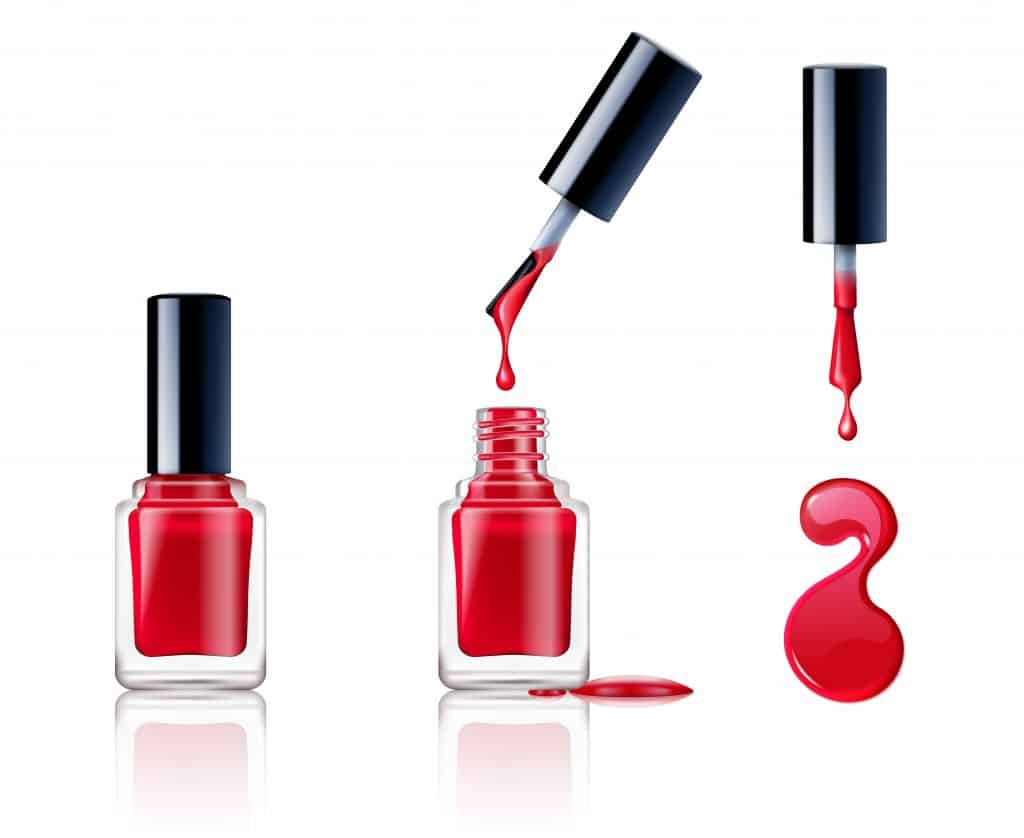
Once lead enters your body, it is extremely difficult to remove. Heavy metals contribute to a wide range of diseases like autoimmune conditions, hormone dysfunction, and idiopathic diseases. You must identify the source of heavy metal exposure and remove heavy metals from your body if you ever want to experience true health.
How To Avoid Toxins In Cosmetics When Choosing Beauty Products
When selecting products, it is important to read labels carefully in order to avoid potentially harmful toxins. Checking the ingredients list for any unfamiliar or foreign-sounding chemicals can help ensure that you are avoiding these substances. Additionally, you should also check to see if the product has been certified by a third-party organization as being free of certain toxins or containing only natural, safe ingredients.
To further protect yourself from toxic substances, research the company that produces the product and make sure they have a good reputation for producing safe items with quality control measures in place. You can look up reviews online and contact customer service with any questions you may have about their processes and materials used. Whenever possible, opt for natural or organic products that are free from harsh chemicals and preservatives.
Finally, always exercise caution when using any product that contains warnings about potential adverse effects. Even natural products can contain toxins if they are not produced with care, so it is important to be mindful of what we expose ourselves to. Taking the time to research products and make informed decisions can help us avoid potentially harmful toxins when choosing products.
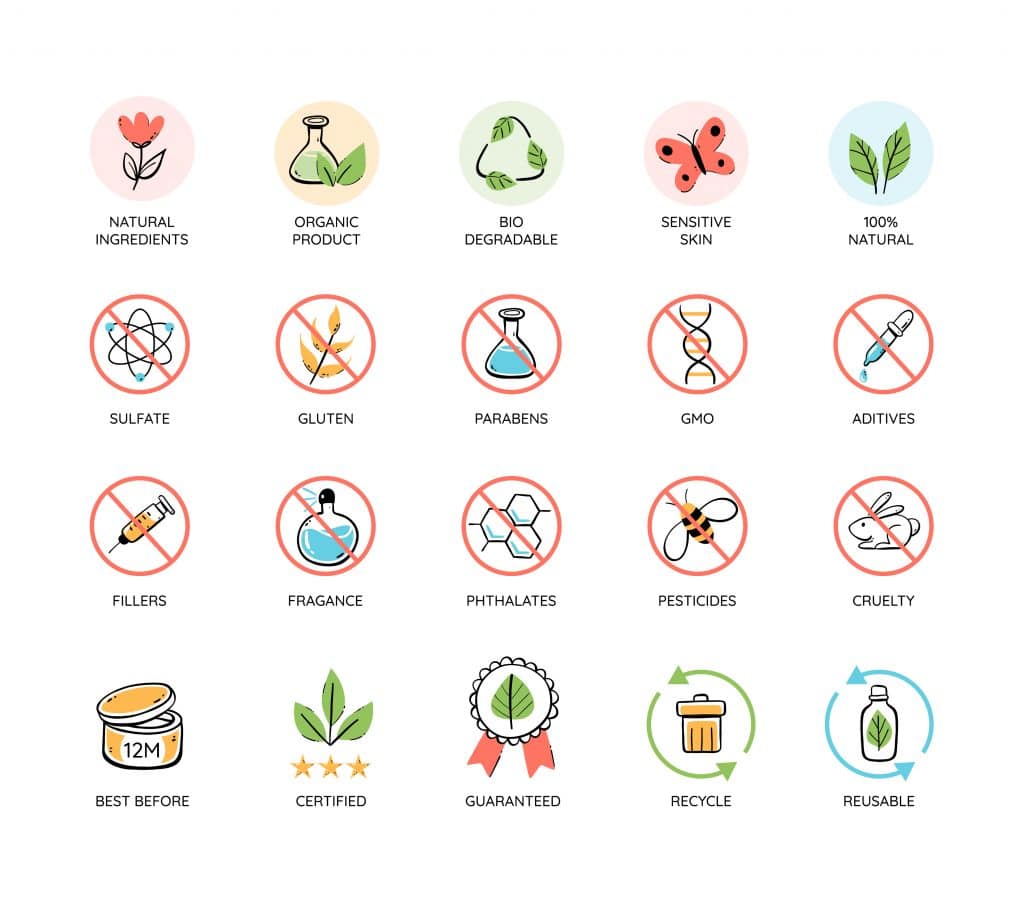
Tips For Choosing Safer Alternatives To Avoid Toxins In Cosmetics
The toxins in cosmetics and beauty products are a serious health concern. Many of these ingredients can have long-term negative impacts on our health, including hormone disruption, asthma, and other respiratory illnesses. It is essential to advocate for more stringent regulation of chemicals used in these products to ensure their safety and minimize potential harm to consumers.
Taking steps like reading labels carefully and researching ingredient information can help us become better-educated consumers when it comes to choosing safer body care and beauty products. With this knowledge, we can help protect ourselves and our environment from the potentially harmful effects of toxins in cosmetics.
Read more about toxins in cleaning products, common toxins in everyday life, and toxins like mold and heavy metals that you need to eliminate from your life to regain your health.
References
1 Cal. Dep’t of Pub. Health, Cal. Safe Cosmetics Program, Current Data Summary, https://www.cdph.ca.gov/Programs/CCDPHP/DEODC/OHB/CSCP/Pages/SummaryData.aspx (last accessed Mar. 8, 2019). The California Safe Cosmetics Act of 2005 requires cosmetic manufacturers to disclose to the California Department of Public Health all products containing ingredients known or suspected to cause cancer, birth defects or other reproductive toxicity as determined by certain authoritative scientific bodies, including the Environmental Protection Agency, the National Toxicology Program and the International Agency for Research on Cancer.
2 Darbre, P. D., & Harvey, P. W. (2014). Parabens can enable hallmarks and characteristics of cancer in human breast epithelial cells: a review of the literature with reference to new exposure data and regulatory status. Journal of applied toxicology : JAT, 34(9), 925–938. https://doi.org/10.1002/jat.3027
3 Nowak, K., Ratajczak-Wrona, W., Górska, M., & Jabłońska, E. (2018). Parabens and their effects on the endocrine system. Molecular and cellular endocrinology, 474, 238–251. https://doi.org/10.1016/j.mce.2018.03.014
4 Koniecki, D., Wang, R., Moody, R. P., & Zhu, J. (2011). Phthalates in cosmetic and personal care products: concentrations and possible dermal exposure. Environmental research, 111(3), 329–336. https://doi.org/10.1016/j.envres.2011.01.013
5 Endocrine Disruptors. (2022). National Institute of Environmental Health Sciences. https://www.niehs.nih.gov/health/topics/agents/endocrine/index.cfm
6 Hlisníková, H., Petrovičová, I., Kolena, B., Šidlovská, M., & Sirotkin, A. (2020). Effects and Mechanisms of Phthalates’ Action on Reproductive Processes and Reproductive Health: A Literature Review. International journal of environmental research and public health, 17(18), 6811. https://doi.org/10.3390/ijerph17186811
7 Henry J. Thompson, L. David Meeker, Anthony R. Tagliaferro, Peter J. Becci; Effect of Retinyl Acetate on the Occurrence of Ovarian Hormone-responsive and -nonresponsive Mammary Cancers in the Rat1. Cancer Res 1 March 1982; 42 (3): 903–905.
8 EWG’s Guide to Sunscreens. (2020). EWG’s Guide to Safer Sunscreens. https://www.ewg.org/sunscreen/the-problem-with-vitamin-a/
9 Dearfield, K. L., Abernathy, C. O., Ottley, M. S., Brantner, J. H., & Hayes, P. F. (1988). Acrylamide: its metabolism, developmental and reproductive effects, genotoxicity, and carcinogenicity. Mutation research, 195(1), 45–77. https://doi.org/10.1016/0165-1110(88)90015-2
10 Poursafa, P., Ataei, E., & Kelishadi, R. (2015). A systematic review on the effects of environmental exposure to some organohalogens and phthalates on early puberty. J Res Med Sci, 20(6): 613-18, https://www.ncbi.nlm.nih.gov/pmc/articles/PMC4621657/
11 Mylchreest, E., Cattley, R.C., & Foster, P.M. (1998). Male reproductive tract malformations in rats following gestational and lactational exposure to Di(n-butyl) phthalate: an antiandrogenic mechanism? Toxicol Sci, 43(1): 47-60, https://www.ncbi.nlm.nih.gov/pubmed/9629619
12 Kay, V.R., Bloom, M.S., & Foster. W.G. (2014). Reproductive and developmental effects of phthalate diesters in males. Crit Rev Toxicol, 44(6): 467-98, https://www.ncbi.nlm.nih.gov/pubmed/24903855
13 Int’l Agency for Research on Cancer, Di(2-ethylhexyl) Phthalate (2013), https://monographs.iarc.fr/wp-content/uploads/2018/06/mono101-006.pdf.
14 Johansen J. D. (2003). Fragrance contact allergy: a clinical review. American journal of clinical dermatology, 4(11), 789–798. https://doi.org/10.2165/00128071-200304110-00006
15 Safe Cosmetics. (2022, April 26). Formaldehyde And Formaldehyde-Releasing Preservatives. https://www.safecosmetics.org/chemicals/formaldehyde/
16 Formaldehyde. (2023). National Institute of Environmental Health Sciences. https://www.niehs.nih.gov/health/topics/agents/formaldehyde/index.cfm
17 Weatherly, L. M., & Gosse, J. A. (2017). Triclosan exposure, transformation, and human health effects. Journal of toxicology and environmental health. Part B, Critical reviews, 20(8), 447–469. https://doi.org/10.1080/10937404.2017.1399306
18 Abraham, K., Wöhrlin, F., Lindtner, O., Heinemeyer, G., & Lampen, A. (2010). Toxicology and risk assessment of coumarin: focus on human data. Molecular nutrition & food research, 54(2), 228–239. https://doi.org/10.1002/mnfr.200900281
19 DiNardo, J. C., & Downs, C. A. (2018). Dermatological and environmental toxicological impact of the sunscreen ingredient oxybenzone/benzophenone-3. Journal of cosmetic dermatology, 17(1), 15–19. https://doi.org/10.1111/jocd.12449
20 Schwensen, J. F., Uter, W., Bruze, M., Svedman, C., Goossens, A., Wilkinson, M., Giménez Arnau, A., Gonçalo, M., Andersen, K. E., Paulsen, E., Agner, T., Foti, C., Aalto-Korte, K., McFadden, J., White, I., Johansen, J. D., & European Environmental Contact Dermatitis Research Group (2017). The epidemic of methylisothiazolinone: a European prospective study. Contact dermatitis, 76(5), 272–279. https://doi.org/10.1111/cod.12733
21 Styrene. (2022). National Institute of Environmental Health Sciences. https://www.niehs.nih.gov/health/topics/agents/styrene/index.cfm
22 Toxic Chemicals Found in Many Cosmetics. (2021, June 15). WebMD. https://www.webmd.com/beauty/news/20210615/toxic-chemicals-cosmetics
23 Lose the lilial: European Union ban shows risks of chemical in cosmetics. (2022, March 21). Environmental Working Group. https://www.ewg.org/news-insights/news/2022/03/lose-lilial-european-union-ban-shows-risks-chemical-cosmetics
24 Kobylewski, S., & Jacobson, M. F. (2012). Toxicology of food dyes. International journal of occupational and environmental health, 18(3), 220–246. https://doi.org/10.1179/1077352512Z.00000000034
25 Center for Food Safety and Applied Nutrition. (2022, November 22). Limiting Lead in Lipstick and Other Cosmetics. U.S. Food And Drug Administration. https://www.fda.gov/cosmetics/cosmetic-products/limiting-lead-lipstick-and-other-cosmetics
26 Lead. (2022). National Institute of Environmental Health Sciences. https://www.niehs.nih.gov/health/topics/agents/lead/index.cfm

